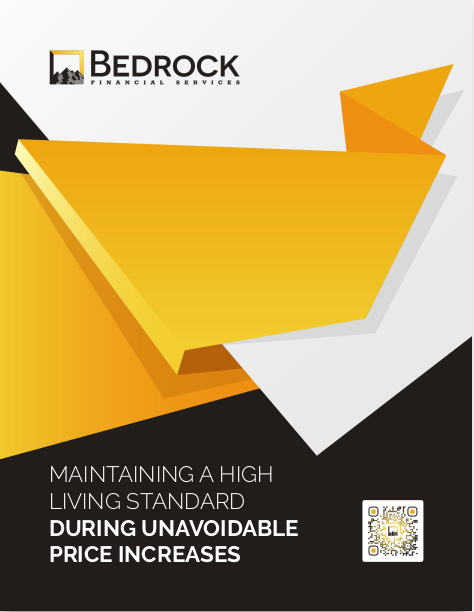Key Takeaways
-
You strengthen client trust when you use data to create context—not just make a point.
-
Numbers have more power when they tell a story that speaks directly to someone’s fears, hopes, or goals.
Why Raw Stats Fall Flat
As an independent insurance agent, you know how tempting it is to present statistics as a persuasive shortcut. “Did you know that 70% of people over age 65 will need long-term care?” On paper, that sounds impactful. In reality? It often lands with a thud.
Here’s why: data alone doesn’t move people. They need to feel what that number means for their life.
If you want to influence decisions that matter—about retirement, risk protection, or legacy planning—you can’t rely on numbers to do all the emotional labor. You need to interpret those numbers through the lens of human experience.
Frame the Numbers with Human Stakes
To make a statistic hit home, don’t just share it—frame it. That means answering one key question: “So what?”
Let’s say you’re sharing a stat about the average cost of a hospital stay without insurance. Instead of presenting it like this:
-
“The average uninsured hospital stay costs $13,000.”
Try something more grounded in their world:
-
“Without coverage, a three-day hospital stay could cost more than what most people have in savings. That one accident could derail your entire financial plan.”
This doesn’t just present the cost—it contextualizes the risk.
Use Time as a Conversion Tool
Statistics become more personal when you stretch them across a timeline. Time adds weight. It turns an abstract dollar amount into a real financial burden.
Instead of saying:
-
“Prescription drug costs are rising every year.”
Try this:
-
“Over the next decade, the average retiree could spend over $20,000 just on prescriptions alone—not including hospital visits or out-of-pocket medical bills.”
You’re not just showing a number. You’re painting a picture of erosion. Time is what makes costs feel cumulative—and consequences feel urgent.
Speak Their Language, Not Yours
If you use industry terminology or actuarial jargon to explain numbers, you lose people. Fast.
What sounds like a clean presentation of risk to you might feel like a foreign language to your client.
Here’s what you can do instead:
-
Replace “market volatility” with “when the market drops suddenly.”
-
Swap “mortality risk” with “what happens if you pass away earlier than expected.”
-
Instead of “inflation protection,” try “keeping your income strong even when prices rise.”
When your language matches theirs, your stats stop sounding like warnings and start sounding like insights.
Anchor Stats in Personal Priorities
The most powerful use of data is when it reflects back what matters most to your client.
You already do discovery. You ask questions about family, goals, fears, and priorities. That’s your cue to connect the stat to their story.
Instead of saying:
-
“Only 39% of Americans have enough saved to cover a $1,000 emergency.”
You could say:
-
“You mentioned your daughter is applying to colleges next year. What if the car breaks down the week of her campus visit, and you’re short on funds? That’s what this emergency account is protecting.”
The stat becomes personal. And suddenly, it matters.
Layer the Impact with Visuals
Even a well-framed stat loses its edge if buried in dense text or rapid-fire speech.
To break through the noise, you need visual hierarchy. That might include:
-
Infographics that show cost comparisons over time.
-
Pie charts that break down where a client’s money goes.
-
Timelines that reveal how small monthly contributions grow.
When your visuals guide interpretation rather than just display data, you help clients internalize the meaning behind the number.
Repeat with Variation to Strengthen Retention
Most clients don’t process information the first time. Or the second.
To make data stick, you need to repeat it—but in different formats and tones:
-
First, in conversation.
-
Later, in a follow-up email.
-
Then, in a summary graphic you share before your next meeting.
Each repetition deepens memory and ownership. The goal isn’t to hammer them with facts, but to let a consistent insight echo across touchpoints.
Use Contrast to Create Clarity
The human brain makes sense of data through comparison. A single number has no meaning without a benchmark.
So don’t just say, “This costs $5,000 a year.”
Say, “That’s less than what the average household spends annually on dining out. But it protects your entire income in case of disability.”
This kind of contrast reframes cost as value. And it moves the conversation away from price and toward priorities.
Give Future-Focused Data a Tangible Present
One reason stats often fail is that they refer to something distant. Retirement. Illness. Loss. Clients nod politely but disengage emotionally.
To fix this, make the future feel like something that starts now.
Try this structure:
-
“Let’s project 10 years forward.”
-
“Now rewind to today. What are the first three steps we can take this month to make that outcome more likely?”
You’re shrinking the gap between where they are and where the numbers say they might end up. That’s how you turn awareness into action.
Reinforce with Questions, Not Statements
Sharing stats is useful. But asking questions about them makes the conversation collaborative.
Let’s say you mention that life expectancy has increased by over 10 years since the 1970s. You could ask:
-
“What does living 10 years longer mean for your income plan?”
-
“If your retirement could last 30+ years, what would you want those later years to feel like?”
A well-placed question invites reflection. And reflection drives decision-making.
Know When to Stop Talking and Let the Silence Do the Work
Sometimes, the most impactful move is to state the number, then pause. Let it breathe.
If you say, “The average out-of-pocket cost for cancer treatment is over $10,000 a year,” don’t rush to explain it. Let your client sit with it. Give them room to feel the weight of it before moving on.
Pauses create space. And in that space, real understanding can form.
Help Stats Trigger a Feeling—Not Just a Thought
Ultimately, your job isn’t to make clients memorize statistics. It’s to make them feel something meaningful from those statistics.
Do they feel protected? Do they feel in control? Do they feel like they’re making a decision their future self will thank them for?
Stats that hit home don’t just describe reality. They shape emotion. And emotion is what turns information into momentum.
Numbers That Drive Connection, Not Confusion
If your goal is to educate and influence—not overwhelm—then your stats need to serve the story, not be the story.
Use them to:
-
Illustrate why something matters now, not just eventually.
-
Show how a small shift today prevents a big problem later.
-
Connect cold facts to warm intentions.
When you do that, your data becomes something much bigger: trust, clarity, and confidence for every client conversation.
If you’re looking for more ways to transform how you present information, Bedrock Financial Services can help. We offer tools, support, and training that make it easier for independent agents like you to connect, convert, and retain clients. Sign up today to explore how we can help you elevate your message and your business.







